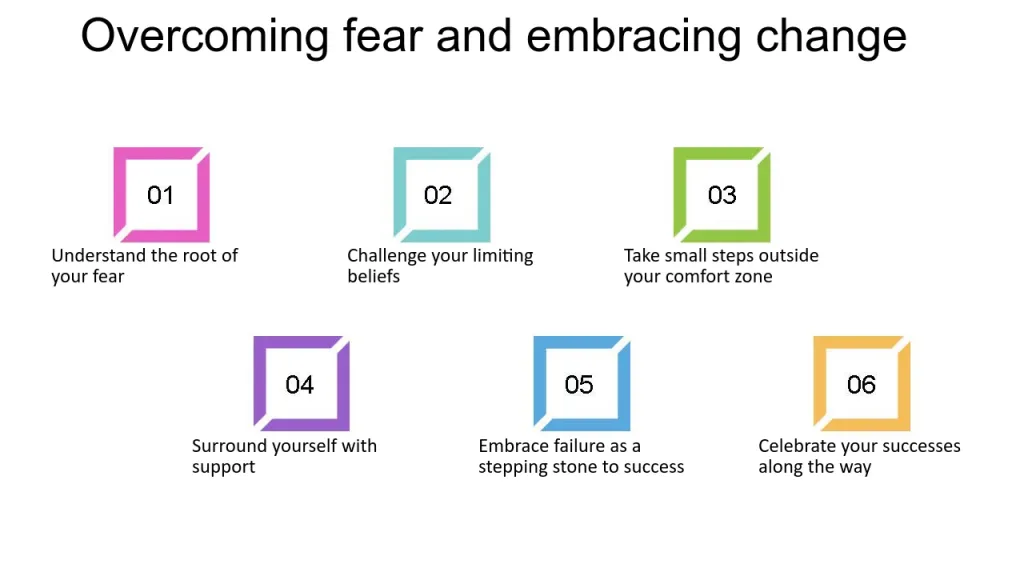Fear is a fundamental human emotion that serves as both a protective mechanism and a barrier to growth. While it helps avoid danger, it often paralyzes individuals from pursuing goals. Understanding the psychological and neurological basis of fear, along with practical strategies to counter it, can empower individuals to take decisive action.

Understanding the Science of Fear
Fear originates in the amygdala, a part of the brain responsible for processing emotions. When a perceived threat arises, the amygdala triggers the release of stress hormones such as cortisol and adrenaline. These chemicals heighten alertness, preparing the body for a fight-or-flight response. However, when fear becomes chronic, it can hinder decision-making and personal growth.
Neuroscientists suggest that the prefrontal cortex plays a crucial role in regulating fear responses. Since this brain region is responsible for rational thinking and problem-solving, strengthening neural connections between the prefrontal cortex and the amygdala can significantly help in managing fear effectively.
The Psychological Impact of Fear
Fear influences thought patterns, often leading to avoidance behaviours. Cognitive distortions, such as catastrophizing and overgeneralization, exacerbate fear-based responses. When individuals continuously reinforce fear through avoidance, their neural pathways strengthen these negative associations, making it more challenging to break free.
Research in cognitive-behavioural psychology indicates that exposure to feared situations in a controlled manner can significantly reduce fear responses. By gradually facing fears, the brain rewires itself to associate those experiences with safety rather than danger.
Reframing Fear as a Growth Opportunity
One of the most effective ways to overcome fear is by shifting perspective. Fear often signals a new challenge or an uncharted path. Instead of perceiving fear as an obstacle, viewing it as an indicator of potential growth can transform the mindset.
Positive psychology emphasizes the concept of a “growth mindset,” where challenges are seen as learning opportunities. This approach reduces fear’s grip by focusing on the benefits of taking action rather than the potential risks of failure.
Techniques to Conquer Fear and Take Action
Mindfulness and Emotional Regulation
Practicing mindfulness enhances self-awareness and helps manage emotional responses. Studies show that mindfulness meditation reduces amygdala activity while strengthening prefrontal cortex function. This balance allows for more rational responses to fear-inducing situations.
Deep breathing exercises, such as diaphragmatic breathing, lower stress hormone levels. This technique activates the parasympathetic nervous system, promoting relaxation and reducing fear responses.
Cognitive Reappraisal and Self-Talk
Cognitive-behavioral therapy (CBT) highlights the importance of reframing negative thoughts. Challenging irrational fears and replacing them with constructive beliefs can shift the emotional response.
Self-talk plays a vital role in this process. Encouraging inner dialogue, such as “I am capable” or “I have overcome challenges before,” reinforces confidence and resilience.
Gradual Exposure and Desensitization
Systematic desensitization is a proven technique for reducing fear. By exposing oneself to fear triggers in small, manageable steps, the brain adapts to these experiences. Over time, fear responses diminish, making it easier to take action.
For instance, if public speaking induces anxiety, starting with small conversations, then progressing to speaking in front of a small group, builds confidence incrementally. This method is widely used in anxiety treatment and behavioral therapy.
Visualization and Mental Rehearsal
Exercise has a profound impact on fear management. Physical activity releases endorphins, which counteract stress hormones. Regular movement also enhances resilience by improving overall mental well-being.
Engaging in physical activities like yoga, running, or strength training fosters a sense of control over the body and mind. This empowerment translates into greater confidence when facing fears.
Physical Activity and Fear Reduction
Exercise has a profound impact on fear management. Physical activity releases endorphins, which counteract stress hormones. Regular movement also enhances resilience by improving overall mental well-being.
Engaging in physical activities like yoga, running, or strength training fosters a sense of control over the body and mind. This empowerment translates into greater confidence when facing fears.

The Role of Support Systems
Social connections play a significant role in fear management. Supportive relationships provide reassurance and encouragement. When individuals share their fears with trusted friends or mentors, they gain perspective and motivation to take action.
Research in social psychology indicates that people are more likely to confront fears when they have a strong support network. Accountability partners, mentors, or peer groups help maintain motivation and consistency.
The Science of Habit Formation in Fear Management
Building habits that promote courage and action reduces fear over time. According to neuroscience, habits form through repeated behaviours that strengthen neural pathways. Consistently facing small fears rewires the brain for resilience.
James Clear, in his book Atomic Habits, emphasizes that small, consistent actions lead to lasting change. Creating daily habits that push comfort zones gradually diminishes fear’s influence.
Overcoming Fear Through Purpose and Meaning
A strong sense of purpose diminishes fear’s power. When individuals align actions with core values, they find motivation beyond fear. Studies in positive psychology reveal that purpose-driven individuals exhibit lower stress levels and greater resilience.
Identifying personal values and goals provides a roadmap for decision-making. When fear arises, focusing on long-term objectives shifts attention from immediate discomfort to broader aspirations.
Final Thoughts on Fear and Action
Fear is a natural response, but it should not dictate life’s choices. By understanding the science behind fear and implementing practical strategies, individuals can reclaim control. Mindfulness, cognitive restructuring, exposure therapy, visualization, and physical activity all contribute to overcoming fear.
Taking action despite fear builds confidence and resilience. Each step forward reinforces the belief in one’s abilities. With consistent effort and the right mindset, fear loses its grip, allowing for personal and professional growth. The key lies in embracing fear as a catalyst for transformation rather than a barrier to progress.









